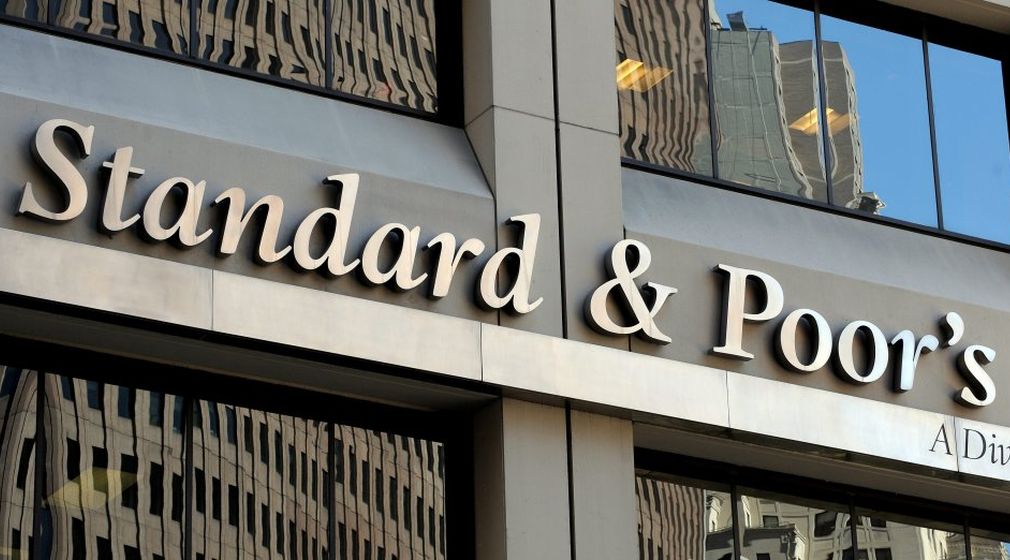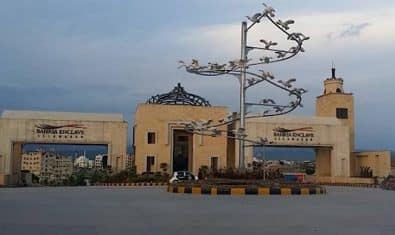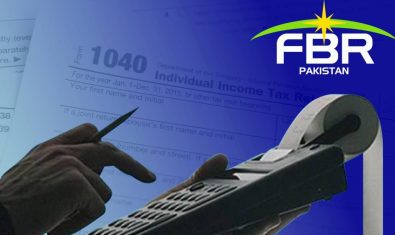Global ratings agency S&P Global lowered its long-term sovereign credit rating on Pakistan to ‘CCC+’ from ‘B-‘, and the short-term rating to ‘C’ from ‘B’ on enduring external, economic and fiscal risks.
The rating agency stated that Pakistan’s already low foreign exchange reserves will remain under pressure throughout 2023, barring a material decline in oil prices or a step-up in foreign assistance.
A series of shocks — severe floods, surging food and energy inflation, and rising global interest rates — will lead to weaker economic and fiscal outcomes, and refinancing challenges over the medium term. Pakistan also faces elevated political risks, which may affect its policy trajectory over the next 12 months, the report said. The agency maintained its outlook at stable.
The stable outlook reflects the balance of further risks to Pakistan’s external liquidity position and fiscal performance over the next 12 months against the prospect of additional support from multilateral and bilateral partners.
The agency said it lowered the ratings to reflect a continued weakening of Pakistan’s external, fiscal, and economic metrics. Given high gross external financing needs, and limited foreign exchange reserves, Pakistan’s balance of payments outlook remains vulnerable to energy price developments and the availability and timing of foreign support. We expect the ratio of debt to GDP and budgetary deficits to remain elevated, with more than 40 percent of government receipts used to finance interest payments, thereby reducing the government’s capacity to finance investment and social support, it said.
The report said that severe flooding during the summer of 2022 has imposed additional hardships on households and business, further constraining growth. Pakistan’s fiscal year 2023 (year ending June 2023) economic growth will be much slower than we previously anticipated. In addition to the impact of severe weather in August and September, tighter domestic monetary conditions and elevated inflation will also weigh on economic activity.
The Pakistan government’s policy reform efforts will face difficult macroeconomic and political challenges, and popular pressure against plans to phase out social support measures. Pakistan’s economy faces a weaker outlook in fiscal 2023 following the floods. Simultaneously, domestic demand is grappling with rising prices, particularly for staple goods. Consumer price index (CPI) inflation has surged to more than 20% year on year at the national level, and will remain elevated for the rest of this fiscal year.
After successfully completing the seventh and eighth reviews under the IMF’s Extended Funding Facility (EFF) program, the Pakistan government is facing fresh challenges in meeting the performance requirements for subsequent reviews. Disbursements under the EFF, which began in July 2019, amount to approximately $4.0 billion so far, including a $1.2 billion allocation in August 2022, it added.
The current inflationary environment, coupled with a material slowdown in economic activity and, in some cases, severe humanitarian needs related to the floods, complicates the implementation of measures to consolidate the government’s wide fiscal deficit. It will be more difficult for the government to achieve a primary fiscal balance surplus, and boost its stock of foreign exchange reserves, than it was in earlier in 2022.
With its tenure set to end by August 2023 or earlier, the government has limited time to implement meaningful economic reforms, especially those that may imperil electoral support for coalition members. The agency said it expects political uncertainty to remain elevated over the coming quarters, with continued pressure from the opposition to hold early elections, it said.
The ratings on Pakistan remain constrained by a narrow tax base and elevated domestic and external security risks. The country’s security situation has gradually improved over recent years, but ongoing vulnerabilities weaken the government’s effectiveness and weigh on the business climate. Occasional tensions with India, and Pakistan’s extended land border with Afghanistan, pose challenges to Pakistan’s long-term economic outlook, it added.
The Pakistani rupee’s recent depreciation against the US dollar has also contributed to a continued stagnation in the country’s nominal GDP per capita. Coupled with lower real GDP growth expectations, we forecast GDP per capita will stabilize just above $1,500 by fiscal 2025, it said.
The agency projects that Pakistan’s current account deficit will narrow to 3.3 percent of GDP in 2023 versus 4.7 percent of GDP this year, but improvement is highly contingent on energy and food prices, as well as the continued imposition of administrative measures on imports, the report added.
It estimates that Pakistan’s usable foreign exchange reserves will remain low, at around one month of current account payments. Higher debt-servicing costs are exerting pressure on the government’s fiscal position. With revenues of just over 12 percent of GDP, the government’s capacity to raise taxes is among the weakest of all rated sovereigns.
Pakistan’s fiscal and external positions will face continued pressure from high inflation and interest rates, as well as difficult market conditions, which are set to continue over the next 12 months. We forecast the general government’s fiscal deficit will remain elevated at 6.5 percent of GDP in the current fiscal year, versus 7.9 percent of GDP in fiscal 2022, it added.
The agency expects inflation to remain elevated into 2023, before beginning to moderate in the second half of that calendar year. Nevertheless, Pakistan’s higher interest rates will continue to squeeze the government’s debt-servicing costs over the next two to three years, given its large stock of local currency-denominated debt.





















